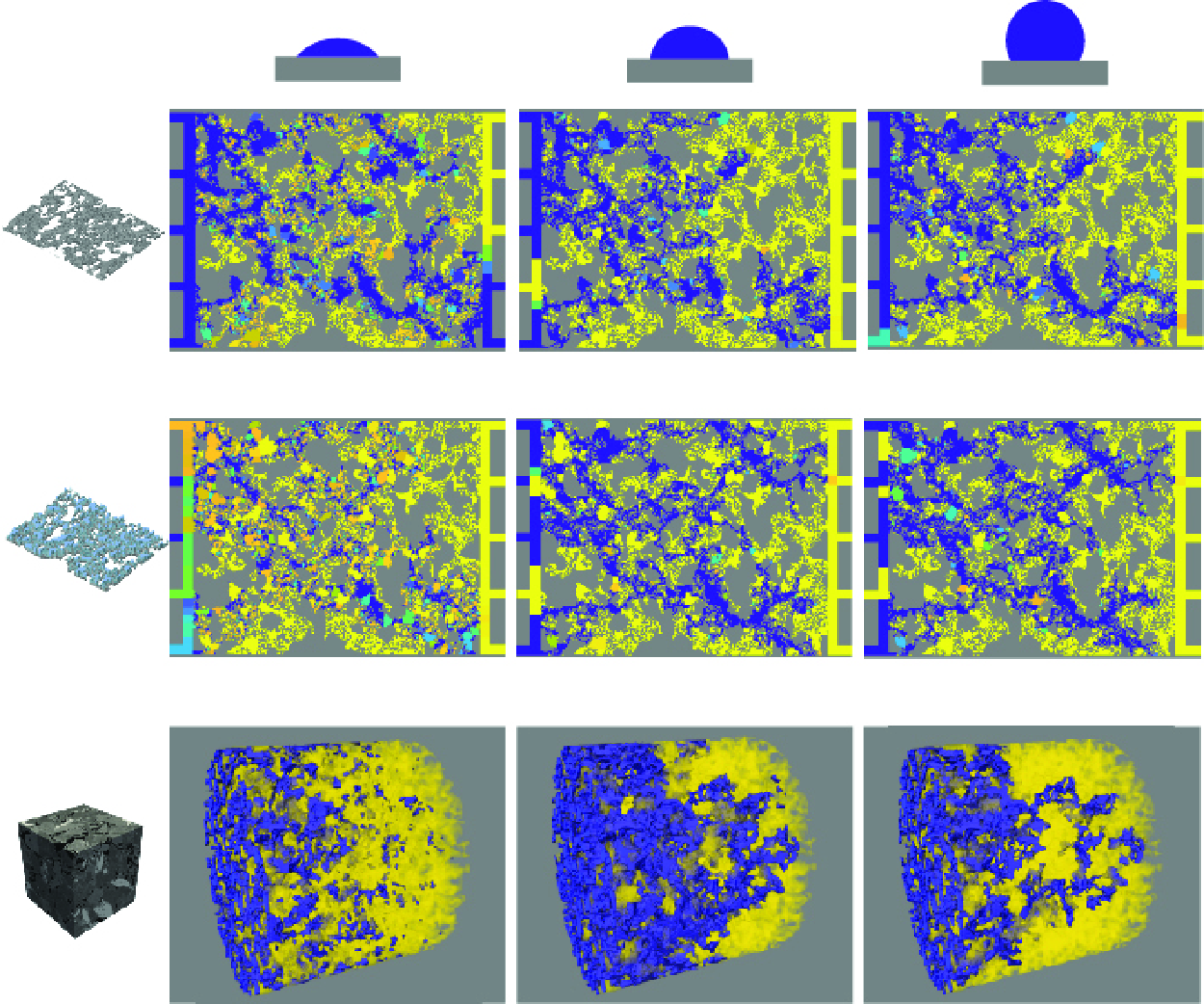No CrossRef data available.
Article contents
3-D-geometry-triggered transition from monotonic to non-monotonic effects of wettability on multiphase displacements in homogeneous porous media
Published online by Cambridge University Press: 25 June 2025
Abstract

Previous studies claimed that the non-monotonic effects of wettability came mainly from the heterogeneity of geometries or flow conditions on multiphase displacements in porous media. For macroscopic homogeneous porous media, without permeability contrast or obvious preferential flow pathways, most pore-scale evidence showed a monotonic trend of the wettability effect. However, this work reports transitions from monotonic to non-monotonic wettability effects when the dimension of the model system rises from two-dimensional (2-D) to three-dimensional (3-D), validated by both the network modelling and the microfluidic experiments. The mechanisms linking the pore-scale events to macroscopic displacement patterns have been analysed through direct simulations. For 2-D porous media, the monotonic effect of wettability comes from the consistent transition pattern for the full range of capillary numbers  $Ca$, where the capillary fingering mode transitions to the compact displacement mode as the contact angle
$Ca$, where the capillary fingering mode transitions to the compact displacement mode as the contact angle  $\theta$ decreases. Yet, it is indicated that the 3-D porous geometries, even though homogeneous without permeability contrast or obvious preferential flow pathways, introduce a different
$\theta$ decreases. Yet, it is indicated that the 3-D porous geometries, even though homogeneous without permeability contrast or obvious preferential flow pathways, introduce a different  $Ca$–
$Ca$– $\theta$ phase diagram with new pore-scale events, such as the coupling of capillary fingering with snap-off during strong drainage, and frequent snap-off events during strong imbibition. These events depend strongly on geometric confinements and capillary numbers, leading to the non-monotonicity of wettability effects. Our findings provide new insights into the multiphase displacement dependent on wettability in various natural porous media and offer design principles for engineering artificial porous media to achieve desired immiscible displacement behaviours.
$\theta$ phase diagram with new pore-scale events, such as the coupling of capillary fingering with snap-off during strong drainage, and frequent snap-off events during strong imbibition. These events depend strongly on geometric confinements and capillary numbers, leading to the non-monotonicity of wettability effects. Our findings provide new insights into the multiphase displacement dependent on wettability in various natural porous media and offer design principles for engineering artificial porous media to achieve desired immiscible displacement behaviours.
JFM classification
Information
- Type
- JFM Rapids
- Information
- Copyright
- © The Author(s), 2025. Published by Cambridge University Press


